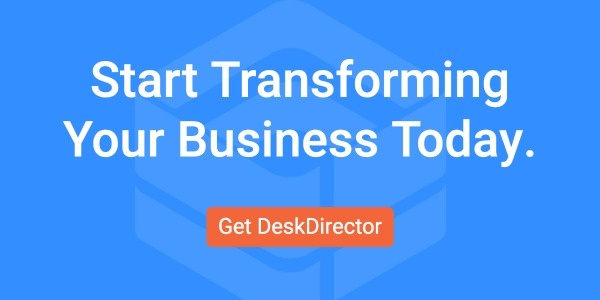The help desk market is projected to reach $11 billion by the end of 2023.
That’s no surprise, given more teams than ever use help desks to manage tickets, including HR, IT, and customer service.
But with almost 100,000 help desk software options out there, understanding the capabilities of each and how to choose the right one for your business can be a struggle!
Read on for everything you need to know about this invaluable type of tool, including its common benefits, features, and best practices, so you can find the best help desk software to streamline your processes and workflows.
What is Help Desk Software?
Help desk software, sometimes called service desk or IT ticketing software, is designed to assist organizations of all sizes in managing and resolving customer support inquiries and technical issues. It serves as a centralized platform for receiving, tracking, and resolving customer tickets and providing timely support.
Various types of teams use service desks to manage the entire ticket lifecycle, including:
- Customer support teams
- IT department
- Call centers
- E-commerce businesses
- Human Resources (HR) department
The 5 Most Common Help Desk Software Features
While there is seemingly endless help desk software out there, most tools possess the following features:
- Workflow & ticketing automation: Automation features streamline repetitive ticketing tasks and workflows. Help desk software may include ticket routing, automated responses, escalation rules, and predefined workflows to improve efficiency and reduce manual effort.
- Self-service capabilities: A knowledge base is a self-service library of information and frequently asked questions (FAQs) that customers can access to find solutions to common issues without contacting support. Help desk software often includes a knowledge base feature for customers to search for relevant articles, tutorials, and troubleshooting guides, which saves agents time and boosts customer satisfaction.
- Communication channels: The software supports various communication channels, including email, live chat, phone integration, and sometimes social media. This allows customers to reach out for support through their preferred channel, and agents can respond and engage in real time.
- Reporting and analytics: Help desk software provides reporting and analytics capabilities to track and measure key performance indicators (KPIs) such as ticket volume, response time, resolution time, customer satisfaction ratings, and agent performance. These insights help organizations identify areas for improvement and make data-driven decisions.
- Integrations: Help desk software often integrates with other systems and tools, such as email tools, customer relationship management (CRM) software, project management tools, or chat platforms. Integration enables seamless data sharing, collaboration between teams, and a unified view of customer information.
The Benefits of Using Help Desk Ticketing Software
Using help desk software benefits internal users, agents, external end-users, and customers in many ways:
- Satisfy end-users: Enable organizations to provide prompt and efficient customer support, resulting in higher customer satisfaction. The software centralizes customer inquiries, ensures timely responses, and allows for consistent service delivery, enhancing the overall customer experience.
- Streamline ticket management: Facilitate efficient ticket management by organizing and prioritizing customer inquiries. The software provides a centralized platform to track, assign, and escalate tickets, ensuring that issues are addressed in a timely manner, and nothing falls through the cracks.
- Enhance productivity: Automate routine tasks and workflows, reducing manual effort and boosting productivity. Help desk software enables support agents to handle a larger volume of tickets effectively and helps them focus on complex issues that require their expertise. Additionally, features like canned responses and knowledge base resources speed up response times and improve efficiency.
- Communicate and collaborate: Promote effective communication and collaboration between support agents, teams, and customers. Ticketing software offers internal communication tools, shared ticket views, and collaboration features that enable IT teams to work together faster and more efficiently.
- Gain visibility: Provide comprehensive reporting and analytics capabilities that offer insights into ticket volumes, response times, agent performance, and customer satisfaction. These metrics help organizations identify trends, bottlenecks, and areas for improvement, enabling data-driven decision-making and continuously improving service.
Best Practices for Choosing & Using Your Service Desk Software
Help desk software is clearly beneficial for the entire business, but finding and using the right software takes some effort. Follow these best practices to pick and implement the best service desk software for your business:
- Define your requirements: Before choosing a service desk software, clearly define your organization's requirements and goals. Identify the specific features and functionalities you need to meet your service management needs.
- Evaluate scalability: Ensure that the service desk software you select can scale with your organization's growth. Consider factors like the number of users, support channels, and integration capabilities to accommodate future needs.
- Assess ease of use: Usability is essential for both the service desk agents and end-users. Look for software with an intuitive interface, easy navigation, and customizable workflows. Consider providing a demo or trial to gauge the software's user-friendliness.
- Integration capabilities: Determine whether the service desk software integrates smoothly with other systems, such as asset management, monitoring tools, or collaboration platforms. Seamless integration reduces manual effort, enhances efficiency, and improves overall productivity.
- Customization options: Every business has unique requirements. Choose a service desk software that offers customization options to tailor the workflows, fields, and ticket templates to match your specific needs. This flexibility ensures the software aligns with your business processes.
- Reporting and analytics: Effective service management relies on accurate data and insights. Look for software that provides robust reporting and analytics capabilities, enabling you to measure performance, identify trends, and make data-driven decisions to improve your IT service delivery.
- Security and data privacy: Protecting sensitive data is paramount. Verify that the service desk software meets industry security standards and offers data encryption, access controls, and compliance with relevant regulations.
- Training and support: Consider the availability of training resources, documentation, and technical support offered by the software provider. Adequate training and responsive support ensure a smooth implementation and address any issues or challenges that may arise.
- Regular software updates: Service desk software should continually evolve and improve. Check the software provider's track record for releasing updates and new features. Regular updates indicate that the software is actively maintained and keeps up with industry trends.
- User feedback and reviews: Research user feedback and reviews from other organizations using the service desk software. This can provide valuable insights into the software's strengths, weaknesses, and real-world performance.
Help Desk Software: The Conclusion
Implementing help desk software is an effective way to deliver exceptional customer support, increase operational efficiency, and drive overall business success. The key to leveraging these benefits is choosing the right software and focusing on proper implementation, ongoing training, and user adoption. This will ensure successful utilization and continual improvement of your service management processes, making for a better user experience for all.
Ready to implement an intuitive help desk software that will have you slashing ticketing resolution times fast? Sign up to try DeskDirector!









